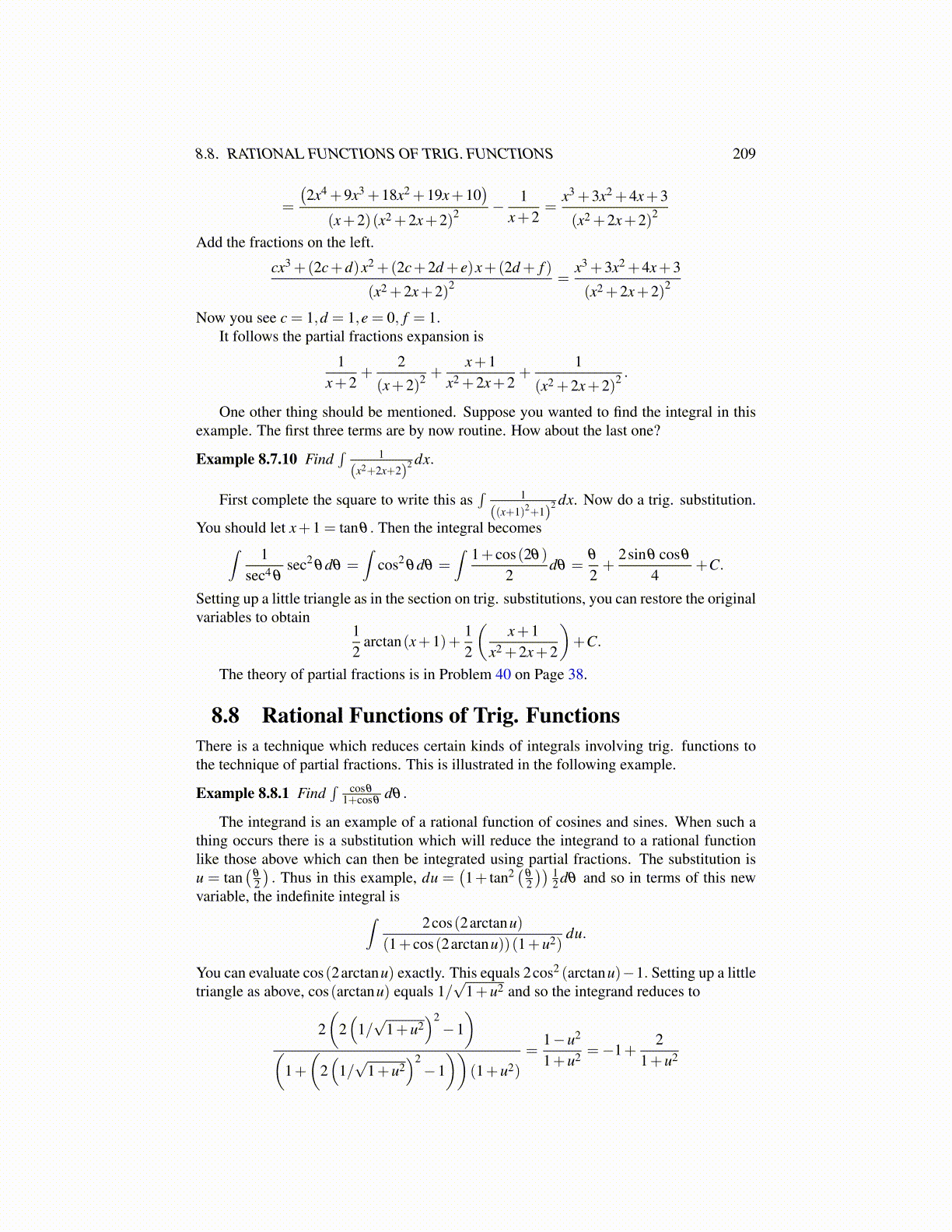
8.8. RATIONAL FUNCTIONS OF TRIG. FUNCTIONS 209
=
(2x4 +9x3 +18x2 +19x+10
)(x+2)(x2 +2x+2)2 − 1
x+2=
x3 +3x2 +4x+3
(x2 +2x+2)2
Add the fractions on the left.
cx3 +(2c+d)x2 +(2c+2d + e)x+(2d + f )
(x2 +2x+2)2 =x3 +3x2 +4x+3
(x2 +2x+2)2
Now you see c = 1,d = 1,e = 0, f = 1.It follows the partial fractions expansion is
1x+2
+2
(x+2)2 +x+1
x2 +2x+2+
1
(x2 +2x+2)2 .
One other thing should be mentioned. Suppose you wanted to find the integral in thisexample. The first three terms are by now routine. How about the last one?
Example 8.7.10 Find∫ 1
(x2+2x+2)2 dx.
First complete the square to write this as∫ 1
((x+1)2+1)2 dx. Now do a trig. substitution.
You should let x+1 = tanθ . Then the integral becomes∫ 1sec4 θ
sec2θdθ =
∫cos2
θdθ =∫ 1+ cos(2θ)
2dθ =
θ
2+
2sinθ cosθ
4+C.
Setting up a little triangle as in the section on trig. substitutions, you can restore the originalvariables to obtain
12
arctan(x+1)+12
(x+1
x2 +2x+2
)+C.
The theory of partial fractions is in Problem 40 on Page 46.
8.8 Rational Functions of Trig. FunctionsThere is a technique which reduces certain kinds of integrals involving trig. functions tothe technique of partial fractions. This is illustrated in the following example.
Example 8.8.1 Find∫ cosθ
1+cosθdθ .
The integrand is an example of a rational function of cosines and sines. When such athing occurs there is a substitution which will reduce the integrand to a rational functionlike those above which can then be integrated using partial fractions. The substitution isu = tan
(θ
2
). Thus in this example, du =
(1+ tan2
(θ
2
)) 12 dθ and so in terms of this new
variable, the indefinite integral is∫ 2cos(2arctanu)(1+ cos(2arctanu))(1+u2)
du.
You can evaluate cos(2arctanu) exactly. This equals 2cos2 (arctanu)−1. Setting up a littletriangle as above, cos(arctanu) equals 1/
√1+u2 and so the integrand reduces to
2(
2(
1/√
1+u2)2
−1)
(1+(
2(
1/√
1+u2)2
−1))
(1+u2)
=1−u2
1+u2 =−1+2
1+u2